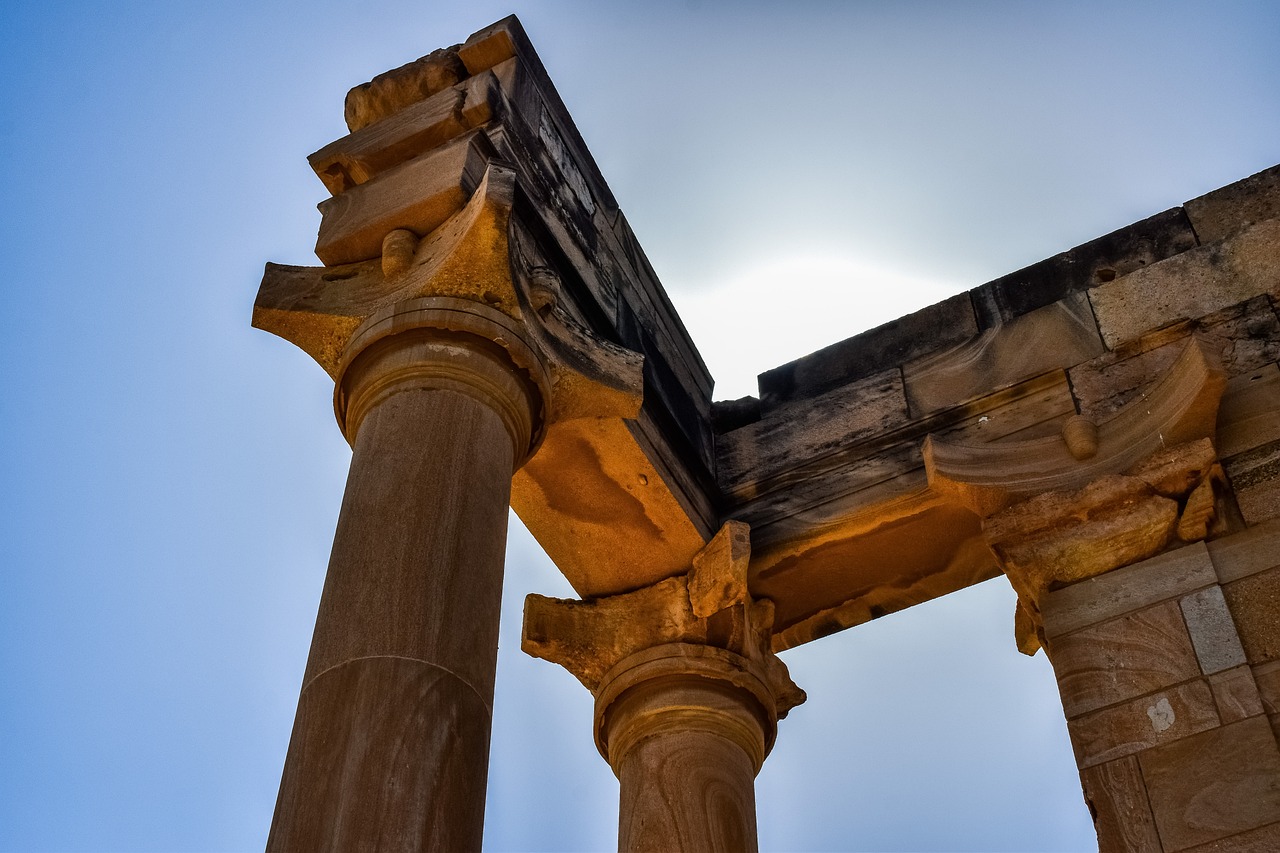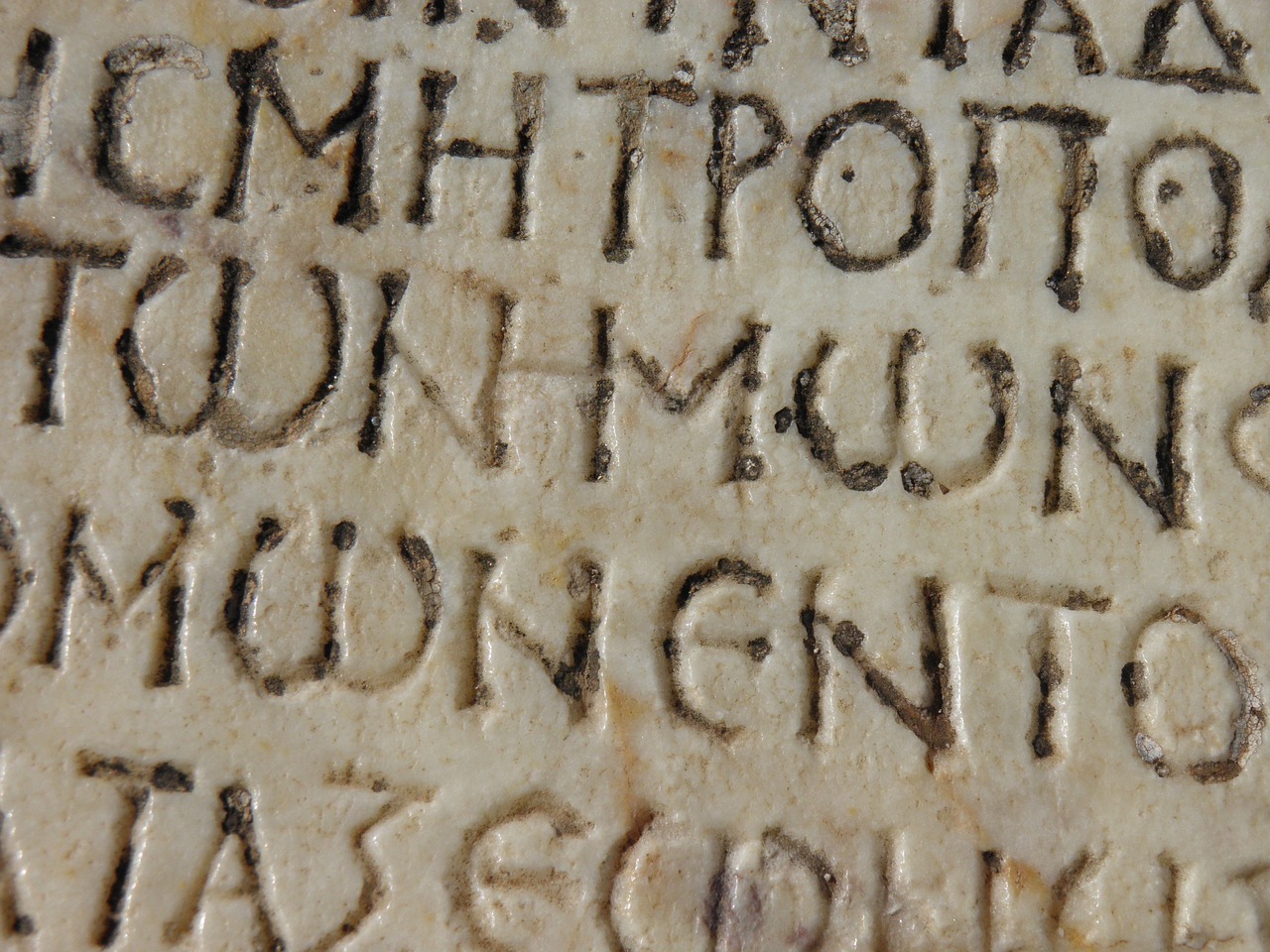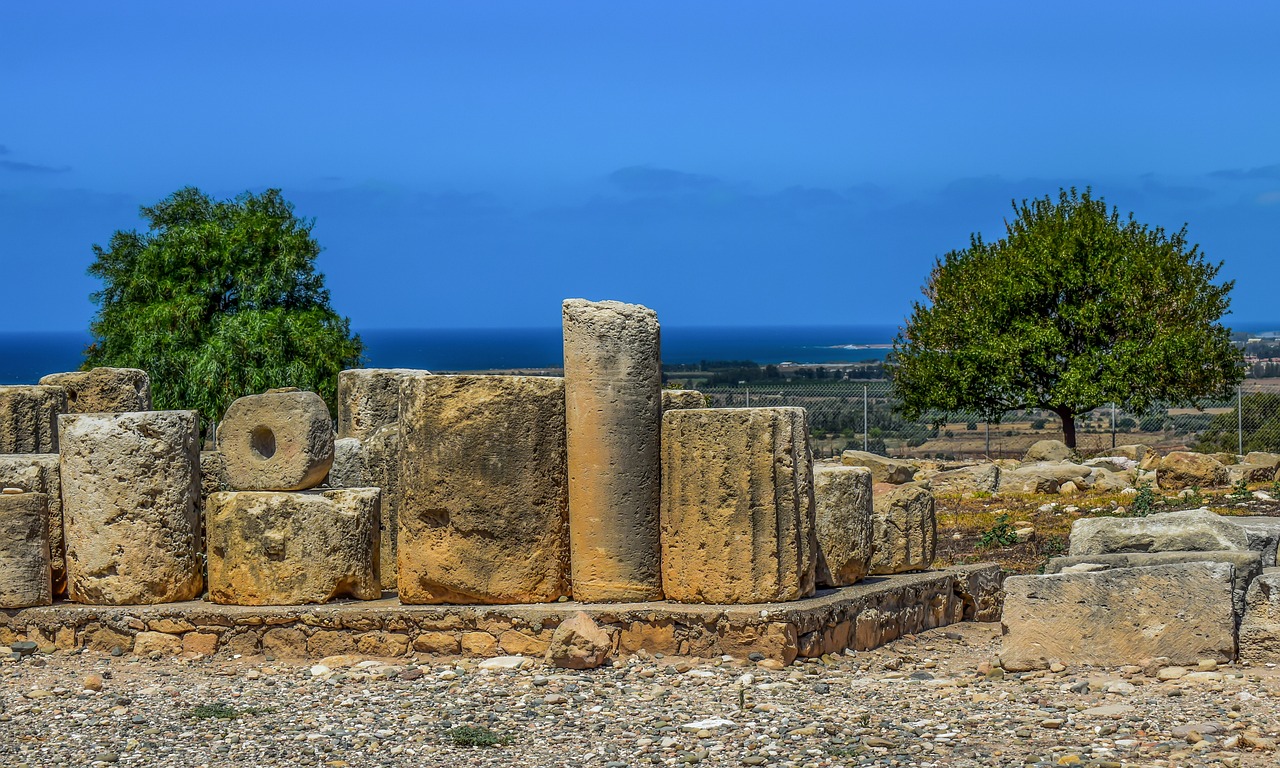The Influence of Ancient Mesopotamia on Later Cultures
Ancient Mesopotamia, often referred to as the "cradle of civilization," holds a profound influence on the development of later cultures across the globe. The advancements, beliefs, and practices that originated in this ancient region have left an indelible mark on art, architecture, governance, writing systems, religious beliefs, and technological innovations of civilizations that followed.
One of the most notable legacies of Mesopotamia is its impact on artistic expressions. The intricate art styles, such as cylinder seals and monumental sculptures, served as a source of inspiration for artistic endeavors in societies like the Egyptians, Greeks, and Romans. The artistic innovations of Mesopotamia paved the way for the evolution of diverse artistic traditions.
Furthermore, Mesopotamia's architectural innovations, including the construction of ziggurats and sophisticated irrigation systems, set a precedent for architectural practices in later civilizations. The structural techniques pioneered in Mesopotamia were adopted and adapted by succeeding cultures, shaping the architectural landscape of different regions.
Legal and governance systems also bear the imprint of Mesopotamian influence. The development of early legal codes, exemplified by the famous Code of Hammurabi, and administrative practices in Mesopotamia laid the groundwork for the establishment of legal systems and governance structures in subsequent societies.
The origins of writing systems can be traced back to Mesopotamia, where the cuneiform script emerged as a means of communication. The dissemination of writing from Mesopotamia to other cultures catalyzed the evolution of diverse writing systems and modes of communication, revolutionizing the way information was recorded and transmitted.
Ancient Mesopotamian religious beliefs and practices, characterized by a complex pantheon of gods, elaborate rituals, and intricate concepts of the afterlife, significantly influenced the religious landscape of later civilizations. The transmission and transformation of Mesopotamian religious ideas shaped the spiritual practices of diverse cultures.
Moreover, the technological achievements of Mesopotamian societies, encompassing advancements in metalworking, wheel technology, and agricultural practices, played a pivotal role in driving progress in various fields. These technological innovations were disseminated to other cultures, fueling advancements and innovations across different regions.
As a hub of trade and cultural exchange, Mesopotamia facilitated the flow of goods, ideas, and technologies to neighboring regions and distant lands. The vibrant trade networks of Mesopotamia contributed to the cultural enrichment of societies, fostering cross-cultural interactions and influencing the development of diverse civilizations.
In conclusion, the enduring legacy of Mesopotamian civilization reverberates through the cultural, social, and intellectual tapestry of later societies. The profound impact of Mesopotamian innovations, beliefs, and practices continues to shape the modern world, underscoring the significance of this ancient civilization in the annals of human history.

Artistic Legacy
Artistic legacy refers to the enduring impact of Mesopotamian art styles and techniques on later civilizations, transcending time and geographical boundaries. The artistic expressions of ancient Mesopotamia, characterized by intricate cylinder seals and imposing monumental sculptures, served as a source of inspiration for artistic endeavors in diverse cultures that followed. From the majestic pyramids of Egypt to the exquisite sculptures of the Greeks and the grandeur of Roman architecture, traces of Mesopotamian influence can be discerned in the artistic achievements of these civilizations.
The intricate art of crafting cylinder seals, used for impressing designs onto clay tablets, showcased the Mesopotamians' mastery of intricate details and storytelling through visual representations. This artistic technique not only served practical purposes in sealing documents but also became a symbol of status and authority, influencing the development of seal designs in other cultures. The monumental sculptures of Mesopotamia, with their imposing figures and intricate detailing, set a precedent for the portrayal of power and divinity in art, leaving a lasting legacy on subsequent artistic traditions.
Moreover, the influence of Mesopotamian art extended beyond visual aesthetics to encompass cultural narratives and religious symbolism. The depiction of deities, mythical creatures, and epic narratives in Mesopotamian art reflected the society's religious beliefs and cosmological worldview, themes that resonated with later civilizations seeking to express their own spiritual and cultural heritage through artistic creations.
As civilizations interacted and exchanged ideas through trade and conquest, artistic styles and techniques were shared and adapted, leading to a rich tapestry of artistic expression that bore traces of Mesopotamian influence. The artistic legacy of ancient Mesopotamia serves as a testament to the enduring power of creativity and innovation, transcending boundaries of time and space to inspire generations of artists and craftsmen.

Architectural Innovations
When we think of architectural marvels, the ancient Mesopotamians certainly left their mark with their innovative techniques and structures. One of the most iconic architectural contributions of Mesopotamia is the ziggurat, a massive stepped pyramid typically serving as a temple complex. These towering structures not only showcased the advanced engineering skills of the Mesopotamians but also influenced the architectural styles of later civilizations.
Moreover, Mesopotamians were pioneers in developing sophisticated irrigation systems to harness the power of rivers like the Tigris and Euphrates for agricultural purposes. The creation of canals, dikes, and reservoirs allowed for efficient irrigation of crops, leading to increased agricultural productivity and supporting the growth of urban centers.
It's fascinating to see how these architectural innovations from Mesopotamia were adopted and adapted by subsequent cultures. For example, the concept of the ziggurat influenced the construction of pyramids in Egypt, while the knowledge of irrigation systems spread to regions like the Indus Valley civilization, showcasing the enduring impact of Mesopotamian architecture on a global scale.

Legal and Governance Systems
When delving into the realm of legal and governance systems, one cannot overlook the profound impact of ancient Mesopotamia. The Code of Hammurabi, a monumental achievement in legal history, emerged from this cradle of civilization, setting a precedent for future legal codes and systems. This ancient code, inscribed on a stele, encompassed a wide range of laws and punishments, reflecting a structured approach to justice and governance.
Moreover, Mesopotamian administrative practices laid the groundwork for efficient governance structures in later civilizations. The meticulous record-keeping, organization of resources, and establishment of administrative hierarchies in Mesopotamia served as a blueprint for future bureaucratic systems. This organizational prowess not only streamlined governance but also paved the way for centralized authority and systematic rule.
Furthermore, the concept of centralized authority and the delegation of power to regional governors in Mesopotamia influenced the development of governance models in subsequent societies. The division of territories, assignment of responsibilities, and the establishment of legal frameworks for governance mirrored the administrative principles of ancient Mesopotamia.
It is fascinating to observe how the legal and governance systems of Mesopotamia transcended time and space, leaving an indelible mark on the evolution of societal structures and legal frameworks. The legacy of Mesopotamian legal codes and administrative practices resonates through the corridors of history, shaping the governance systems of diverse cultures and civilizations.

Writing Systems and Communication
Writing systems have played a crucial role in human communication and the transmission of knowledge throughout history. In ancient Mesopotamia, the development of one of the earliest writing systems, known as cuneiform script, revolutionized the way information was recorded and shared. This intricate system of wedge-shaped characters impressed onto clay tablets allowed for the documentation of various aspects of society, including administrative records, legal codes, literature, and religious texts.
The influence of Mesopotamian writing systems extended far beyond the region, as trade networks and cultural exchanges facilitated the spread of this innovative method of communication to neighboring civilizations. The adaptation and evolution of cuneiform script by societies such as the Akkadians, Assyrians, and Babylonians demonstrate the enduring impact of Mesopotamian writing on subsequent cultures.
Moreover, the development of writing in Mesopotamia paved the way for the emergence of more sophisticated writing systems in other parts of the ancient world. The Phoenician alphabet, for instance, which simplified the complex cuneiform characters into a set of phonetic symbols, influenced the development of alphabets used in Greek, Latin, and modern languages.
Through the dissemination of writing systems, Mesopotamia not only preserved its own history and knowledge but also contributed to the advancement of literacy and intellectual pursuits in later civilizations. The ability to communicate through written language transcended geographical barriers, enabling the exchange of ideas and the preservation of cultural heritage for generations to come.

Religious Beliefs and Practices
Religious beliefs and practices in ancient Mesopotamia were deeply intertwined with every aspect of daily life, shaping the worldview and societal structure of the civilization. The Mesopotamians worshipped a vast pantheon of gods and goddesses, each associated with different aspects of nature, fertility, war, and the afterlife. These deities played crucial roles in the religious rituals and ceremonies performed by priests and priestesses to ensure divine favor and protection for the community.
Cultic practices, including elaborate ceremonies, sacrifices, and offerings, were central to Mesopotamian religious life, reflecting the belief in the need to appease and honor the gods through symbolic gestures and material gifts. Temples, such as the famous ziggurats, served as sacred spaces where the divine and mortal realms intersected, allowing for direct communication with the deities and facilitating the performance of religious rites.
The concept of an afterlife held significant importance in Mesopotamian belief systems, with the belief that the soul journeyed to the underworld after death. The epic of Gilgamesh, one of the earliest known literary works, provides insights into Mesopotamian views on mortality, immortality, and the search for meaning in the face of human mortality.
Over time, Mesopotamian religious ideas and practices influenced the religious traditions of neighboring cultures, such as the Canaanites, Hittites, and Assyrians, as well as later civilizations like the Persians and Greeks. The spread of Mesopotamian religious motifs and mythological narratives contributed to the syncretism of beliefs in the ancient Near East, leading to the amalgamation of diverse religious elements into new hybrid forms.
Moreover, the legacy of Mesopotamian religious beliefs can be seen in the enduring themes of divine authority, cosmic order, and the cyclical nature of life and death that permeate the religious traditions of the Western world. The Mesopotamian influence on later religious thought underscores the profound impact of ancient civilizations on shaping the spiritual and philosophical frameworks of human societies throughout history.

Technological Advancements
When we delve into the technological advancements of ancient Mesopotamia, we uncover a treasure trove of innovations that laid the foundation for future progress in various fields. One of the remarkable achievements of Mesopotamian societies was their mastery of metalworking, which revolutionized the production of tools, weapons, and decorative items. By smelting copper and tin to create bronze, they ushered in a new era of craftsmanship and efficiency.
Moreover, the invention of the wheel in Mesopotamia transformed transportation and trade, enabling the movement of goods and people with unprecedented ease. The wheel not only enhanced agricultural practices by facilitating irrigation and transportation of crops but also revolutionized warfare through the creation of chariots and war chariots.
Another significant technological advancement was the development of agricultural innovations, such as the use of irrigation systems to harness the power of rivers like the Tigris and Euphrates. These systems enabled efficient irrigation of crops, leading to surplus food production and the growth of urban centers.
Furthermore, Mesopotamian societies excelled in the field of architecture, constructing monumental structures like ziggurats that showcased their engineering prowess. These tiered temples served as religious centers and symbols of power, influencing the architectural styles of later civilizations that admired and emulated their grandeur.
Overall, the technological advancements of ancient Mesopotamia not only propelled their own society forward but also had a lasting impact on the development of technology, infrastructure, and innovation in subsequent cultures. The legacy of Mesopotamian ingenuity continues to resonate through the ages, reminding us of the transformative power of ancient civilizations.

Trade and Cultural Exchange
Trade and cultural exchange played a pivotal role in the interconnectedness of ancient civilizations, with Mesopotamia serving as a vibrant hub for such activities. The region's strategic location between the Tigris and Euphrates rivers facilitated the movement of goods, ideas, and technologies across vast distances, linking diverse societies and fostering a rich exchange of cultural practices.
Merchants from Mesopotamia traversed long distances, trading commodities such as textiles, metals, and agricultural products with neighboring regions like Egypt, the Indus Valley, and Anatolia. This exchange of goods not only fueled economic growth but also enabled the transmission of artistic styles, architectural techniques, and religious beliefs between different cultures.
The cultural exchange in Mesopotamia was not limited to material goods but also encompassed intellectual and technological advancements. Scholars and craftsmen from various regions converged in Mesopotamian cities, sharing knowledge and expertise in areas such as mathematics, astronomy, and craftsmanship. This cross-cultural interaction led to the assimilation and adaptation of innovations, contributing to the development of more sophisticated technologies and systems.
Moreover, the vibrant trade networks of Mesopotamia facilitated the diffusion of writing systems, enabling the spread of literacy and communication across borders. The cuneiform script, initially developed in Mesopotamia, found its way to distant lands through trade routes, laying the foundation for the evolution of writing systems in regions like Anatolia, Persia, and the Levant.
Through trade and cultural exchange, Mesopotamia not only connected distant civilizations but also fostered a dynamic environment of innovation and collaboration. The legacy of this exchange can be seen in the diverse cultural influences evident in later societies, showcasing the enduring impact of Mesopotamian civilization on the interconnected world of antiquity.

Legacy and Continuity
The legacy of ancient Mesopotamia reverberates through the corridors of time, leaving an indelible mark on the tapestry of human civilization. As the cradle of urban civilization, Mesopotamia laid the foundation for future societies to build upon, shaping the course of history in myriad ways. The continuity of Mesopotamian influence can be seen in various aspects of modern life, from governance structures to cultural practices, highlighting the enduring impact of this ancient culture.
One of the most striking legacies of Mesopotamia is its contribution to the development of legal and governance systems. The Code of Hammurabi, one of the earliest known legal codes, established principles of justice and fairness that resonate through legal systems to this day. The administrative practices pioneered in Mesopotamia set a precedent for efficient governance, influencing the organizational structures of later societies.
Furthermore, Mesopotamia's advancements in writing systems revolutionized communication and record-keeping, laying the groundwork for the evolution of written language. The cuneiform script, with its intricate symbols inscribed on clay tablets, became a model for future writing systems, facilitating the transmission of knowledge and ideas across generations and cultures.
The religious beliefs and practices of ancient Mesopotamians also left a lasting imprint on subsequent civilizations. The rich pantheon of Mesopotamian gods, the elaborate rituals, and the complex afterlife concepts influenced the religious traditions of neighboring regions, fostering a syncretic blend of beliefs that shaped the spiritual landscape of the ancient world.
Moreover, Mesopotamia's technological innovations, from metalworking to irrigation systems, propelled advancements in various fields and spurred economic growth and cultural exchange. The wheel technology, developed in Mesopotamia, revolutionized transportation and trade, facilitating connections between distant lands and fostering a global network of exchange.
As a hub of trade and cultural exchange, Mesopotamia served as a melting pot of diverse influences, where ideas, goods, and technologies converged and diffused to shape the development of surrounding regions. The legacy of Mesopotamia as a center of innovation and creativity endures in the interconnected world we inhabit today, underscoring the enduring relevance of ancient civilizations in shaping our modern reality.
Frequently Asked Questions
- What is the significance of Mesopotamian art in later cultures?
Mesopotamian art served as a foundational influence on artistic expressions in civilizations that followed, impacting styles in regions like Egypt, Greece, and Rome. The use of cylinder seals and monumental sculptures pioneered in Mesopotamia left a lasting legacy on the art world.
- How did Mesopotamian legal codes influence later governance systems?
The development of early legal codes, such as the famous Code of Hammurabi, in Mesopotamia set a precedent for legal systems in later cultures. These codes and administrative practices shaped governance structures and the concept of justice in subsequent societies.
- What role did Mesopotamia play in the evolution of writing systems?
Mesopotamia is credited with the invention of writing through cuneiform script, which later influenced the development of various writing systems. The dissemination of writing from Mesopotamia to other regions paved the way for enhanced modes of communication in different civilizations.
- How did Mesopotamian technological advancements impact other cultures?
The technological achievements of Mesopotamian societies, including advancements in metalworking, wheel technology, and agriculture, were adopted by neighboring cultures and contributed to progress in diverse fields. These innovations played a crucial role in shaping the technological landscape of later civilizations.



















